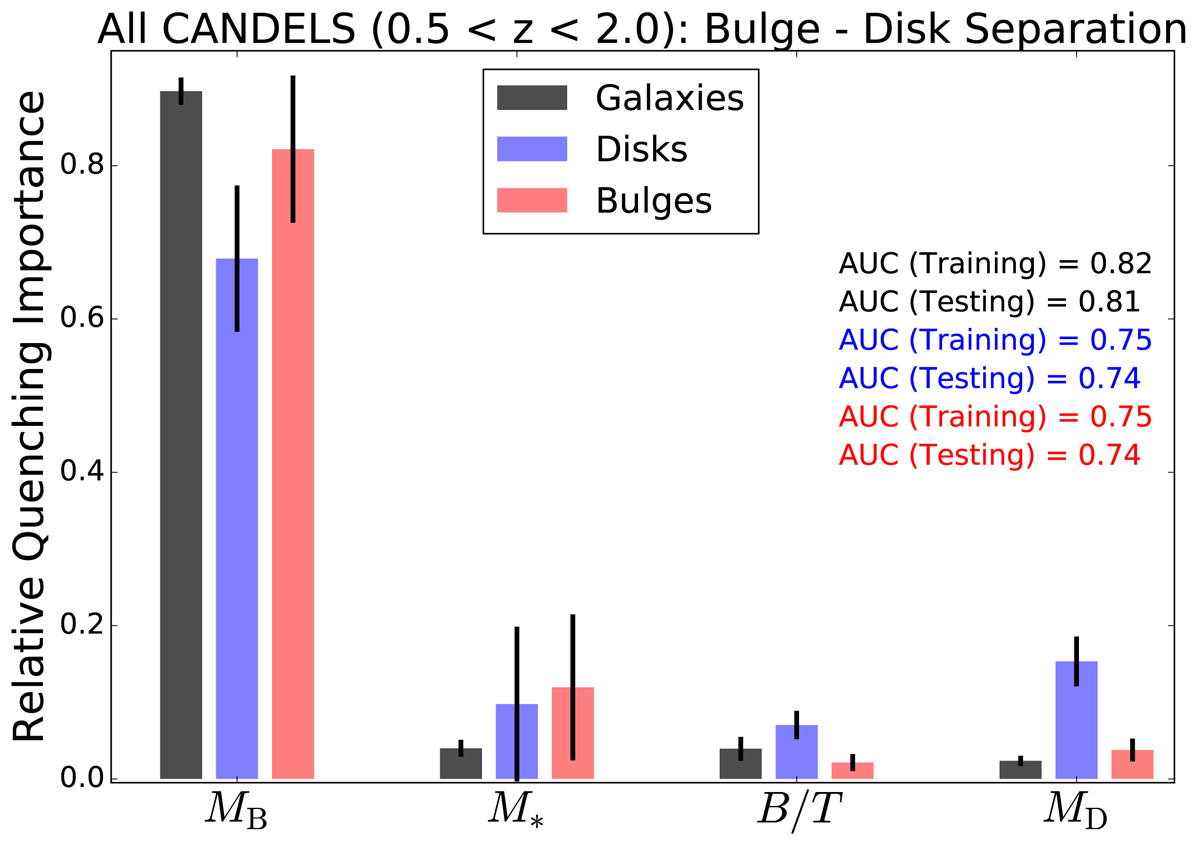Fig. 17.

Download original image
Random Forest quenching classification for bulge and disk structures in CANDELS for the full redshift range (0.5 < z < 2.0), based on UVJ colours. Results for galaxies treated as a whole are shown in black; results for bulge structures and disk structures treated separately are shown in red and blue, respectively. For both bulge and disk structures, bulge mass is clearly found to be the most important parameter governing quenching at high redshifts. Note also that all other parameters are consistently found to be of very little predictive power, even disk mass in disk structures. Compare to Fig. 9 for the low redshift results, which show a very similar trend.
Current usage metrics show cumulative count of Article Views (full-text article views including HTML views, PDF and ePub downloads, according to the available data) and Abstracts Views on Vision4Press platform.
Data correspond to usage on the plateform after 2015. The current usage metrics is available 48-96 hours after online publication and is updated daily on week days.
Initial download of the metrics may take a while.


